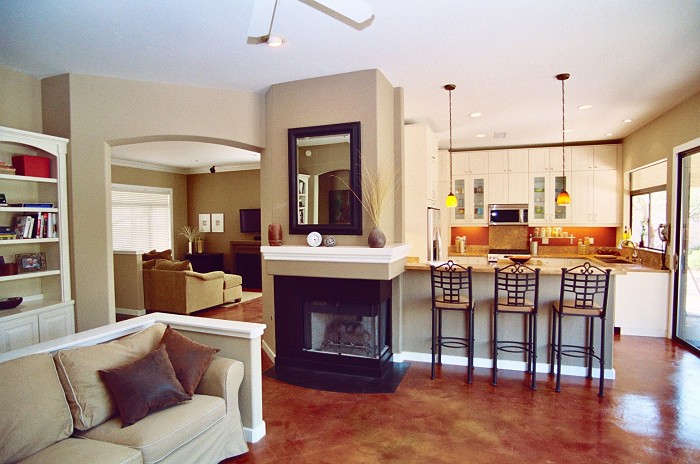Minimalism emerged as an artistic movement in the 1950s and made its way into American homes in the early 60s. It has its roots in ancient Japanese traditions that have themselves grown popular in recent years, and it was also influenced by Dutch artists of the early 20th century.
A minimalist home is a place that immediately makes a statement. It’s clean, sleek, and perfect for modern living. How can you create a space like this for yourself, and can a minimalist space also feel like home?
Why choose minimalism?
A minimalist home is ideal if you’re out a lot and don’t have the time to do a lot of cleaning, because it’s really easy to look after. With a place for everything and everything in its place, it also means that you’ll be able to find whatever you want quickly, with no fuss. Although most people creating minimalist homes choose to replace quantity with quality, spending a lot on the items that are important to them, this initial expense is balanced by the fact that life thereafter is no longer focused on material things. With no motive to acquire more furniture, ornaments or other items, life gets a lot less expensive.
What do you really need?
Before you start to dispose of your possessions and create a home like this, it’s important to think about what you really need. This means making sure that you’ll have the things you actually need, and hanging on to a few of the things that have the most sentimental value to you – this will save you from later regrets, and just because you have them doesn’t mean you’ll need to keep them on display.
To work out what you need, it’s useful to think room by room. In the bedroom, for instance, you’ll need somewhere to sleep (serious minimalists may choose Japanese-style bedrolls instead of actual beds) and somewhere to store your clothes. In the living room, you’ll need somewhere comfortable to sit and somewhere to rest drinks, and you’ll probably want a television and space for any musical instruments you have. In each case, ask yourself: do I really need more?
Simple colors
Traditionally, most minimalism has been monochrome, but more recently it has started to incorporate strong colors. The defining aesthetic principle is that the number of colors used should be kept to a minimum. You might choose to have one theme color for each room, painting one wall that shade and perhaps incorporating it in a stylish accent chair or a rug. These simple touches are a great way to add personality to a minimalist space so that you really feel that it’s yours.
Simple shapes
Minimalism favors clean lines and elegant curves, making it an easy way to create a very stylish space even if you have limited confidence in your decorating abilities. Fuzzy edges and loose fabrics are a no. Replace your curtains with a sleek set of shutters and replace fancy mirror frames with plain ones. Say goodbye to rustic furniture and embrace glass, metal, plastic and lacquer finishes. Choose plain instead of paneled doors, and if you do choose to bring in patterns on items such as rugs and bed linen, keep them simple and geometric.
Storage
It may seem like cheating, but good storage is essential in the minimalist home. Most important of all is storage in the kitchen, because if you care at all about preparing good quality food then you’re inevitably going to need tools with which to do so, as well as the appropriate crockery on which to serve it. Well-designed built-in cupboards and drawers in the same smooth finish can make your kitchen look empty when in fact it’s full of useful things. You can take a similar approach in the bedroom, with a built-in closet that hides away all your clothes and shoes, and keep your jewelry in a box or hang it on the inside of the doors. Good bathroom storage – for towels, as well as things such as toothpaste and shampoo – is also essential.
Assembling your ideal minimalist home can take a bit of effort and imagination, but once it’s done you’ll find it incredibly easy to look after. You’ll also find that it gives you a lot more space and lets you make the most of the light that comes in through your windows. This is a lightweight and easy way to live, but when it’s accented in the right way, it can still create a warm and welcoming home.










Comments are closed.